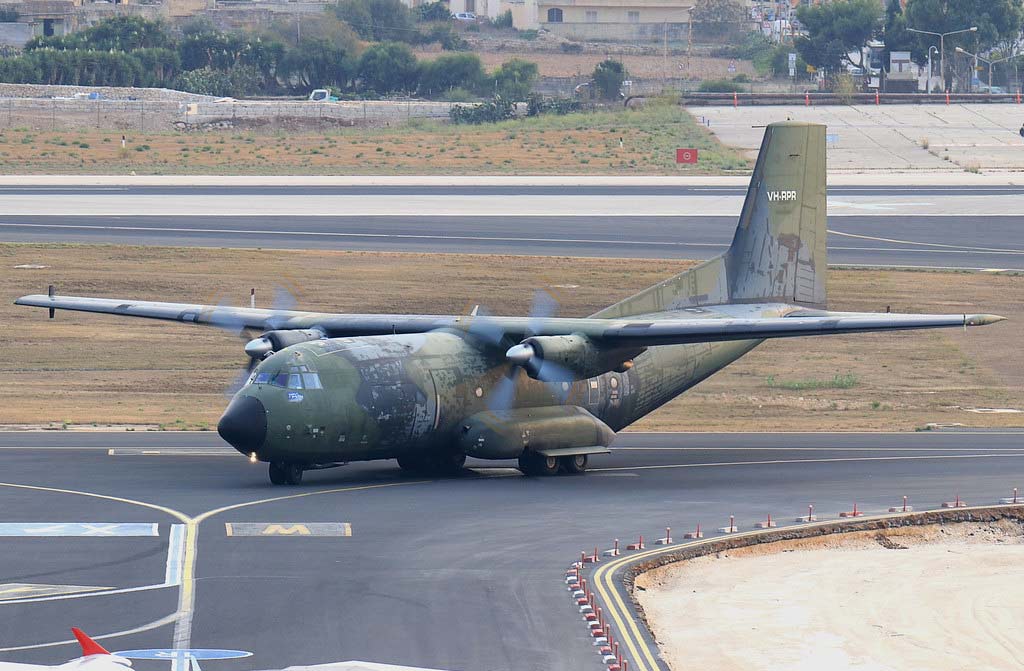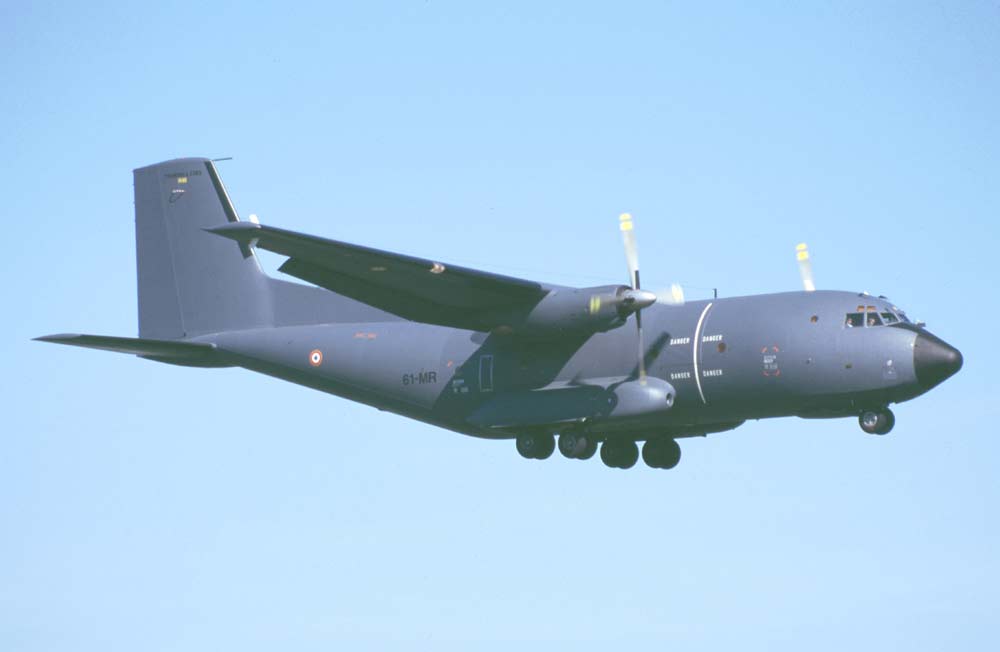The Transall C-160 is a twin-turboprop military transport aircraft, known for its robustness, versatility, and capability to operate from short and unprepared airstrips.
In brief
The Transall C-160, a collaborative European project, emerged as a tactical airlifter tailored for military requirements. Featuring a twin-turboprop design, it boasts a high-wing, rugged landing gear, and a rear-loading ramp, supporting paradrop, cargo, and medevac missions. With a payload capacity of 16 tons and a maximum speed of 513 km/h (319 mph), it excels in short takeoff and landing (STOL) capabilities. Its operational flexibility is complemented by advanced avionics, enabling operations in diverse and challenging environments.

History of the Development of the Transall C-160
In the late 1950s, European nations recognized the need for a modern tactical airlifter to replace older aircraft like the Douglas C-47 Skytrain. The geopolitical landscape, marked by Cold War tensions, necessitated robust military logistics and rapid troop deployment capabilities. This period saw burgeoning European collaboration in technology and defense, setting the stage for a joint Franco-German initiative.
Launched in 1959, the Transall (Transport Allianz) C-160 program was a partnership between France and Germany, later joined by South Africa and Turkey. The consortium aimed to develop an aircraft that could perform tactical airlift missions, including troop transport, cargo delivery, and medical evacuation, with exceptional STOL capabilities for unprepared runways.
The first prototype took to the skies on 25 May 1963, showcasing its potential as a versatile and reliable airlifter. The C-160 quickly gained attention for its robust design, capable of operating in diverse conditions from desert airstrips to Arctic bases. Its NATO nickname, if any, hasn’t been widely publicized or is simply overshadowed by its official designation and operational prowess.
Design of the Transall C-160
The C-160’s design reflects a blend of functionality and versatility. It features a high-wing configuration, ensuring stability and lift, crucial for heavy-lift operations and short-field performance. The aircraft is powered by two Rolls-Royce Tyne turboprop engines, each delivering 6,100 horsepower (4,549 kW), enabling a maximum payload of 35,274 pounds (16,000 kg) over a standard range of 1,080 nautical miles (2,000 km).
Its rugged, retractable landing gear is designed for operations from austere and semi-prepared runways, a vital feature for military and humanitarian missions in remote areas. The rear-loading ramp facilitates efficient loading/unloading of cargo, vehicles, and personnel, while the ability to airdrop supplies and troops adds to its operational versatility.
The fuselage, optimized for cargo, can accommodate various loads, including outsized equipment, vehicles, and palletized cargo. The cockpit, equipped with advanced avionics, enables operation in diverse weather conditions and at night. Despite its robustness, the aircraft’s size and engine configuration impose limitations on speed and altitude, contrasting with faster, jet-powered transports. However, its exceptional STOL capabilities and payload capacity make it a valuable asset for tactical airlift missions.
Performance of the Transall C-160
The Transall C-160 showcases commendable performance metrics. Its two Rolls-Royce Tyne turboprop engines, each generating 6,100 shp, propel the aircraft to a maximum speed of 319 mph (513 km/h), with a service ceiling of 27,000 feet (8,230 meters). The strategic design allows for a considerable range of 1,800 miles (2,900 km) at full load, extendable with in-flight refueling.
Comparatively, the C-160’s performance aligns closely with contemporaries like the Lockheed C-130 Hercules, albeit the latter boasts higher speed and altitude capabilities. However, the C-160’s superior STOL attributes and payload efficiency have cemented its niche, particularly in missions requiring operation from austere, short, or unprepared airstrips.
Variants of the Transall C-160
The C-160 family comprises several variants, each tailored to specific operational needs. The initial C-160F primarily served the French Air Force, while the C-160D was a German variant. The C-160G electronic intelligence (ELINT) version featured advanced surveillance equipment. The C-160NG (Nouvelle Génération) introduced upgraded avionics and extended range. Differences among these variants primarily involve avionics, cargo handling systems, and occasionally, the engines or airframe reinforcements to accommodate specific mission profiles.

Military Use and Combat of the Transall C-160
The Transall C-160 has a storied history in military operations, excelling in logistics, airborne assault, airdrop, and medevac roles. Its armament typically includes defensive countermeasures rather than offensive weapons, focusing on survivability in hostile environments. The aircraft’s robust design and versatile capabilities have seen it deployed extensively in various conflicts and humanitarian missions worldwide.
During its service life, the C-160 participated in numerous high-profile military operations. Notably, it played a crucial role in French military engagements in Africa, providing indispensable logistic support in regions like Chad, Mali, and the Ivory Coast. The aircraft’s ability to operate from short and unpaved runways made it ideal for delivering troops, equipment, and aid in austere environments. German C-160s were also pivotal in operations in the Balkans, delivering humanitarian aid and supporting peacekeeping missions.
The C-160’s operational history includes deployment in conflict zones where it often undertook missions to airdrop supplies, transport troops, and evacuate casualties. Its use in disaster relief operations, exemplified by its role in the aftermath of earthquakes, floods, and other natural disasters, highlighted its capability to operate in challenging conditions and provide rapid response.
In terms of competition, the C-160 was often compared to the Lockheed C-130 Hercules, another prolific tactical airlifter. While the Hercules had a broader user base and arguably more global recognition, the Transall held its own with its unique STOL capabilities and efficient payload-to-range ratio. The aircraft’s performance in rugged and remote environments often surpassed that of its competitors, proving its worth in theaters where runway infrastructure was limited or nonexistent.
Over the years, the C-160 was exported to various countries, serving in the air forces of Turkey, South Africa, and Indonesia, among others. These nations leveraged the aircraft’s capabilities for both military and humanitarian needs, underscoring its international appeal and operational adaptability.
As of 2024, the Transall was gradually being phased out, replaced by more modern aircraft like the Airbus A400M, which offers enhanced capabilities, greater payload, and longer range. The transition reflects ongoing advancements in military airlift technology and the evolving requirements of modern armed forces. However, the C-160 remains in service with some countries, continuing to prove its reliability and effectiveness in diverse operational contexts.
The Transall C-160 has been a cornerstone in military airlift and logistic operations across several decades, characterized by its robust design, versatile utility, and remarkable STOL capabilities. Its development and sustained operational use underscore its significant role in military aviation history, offering a blend of tactical efficiency, reliability, and adaptability. While newer technologies and aircraft designs gradually replace it, the legacy of the C-160 endures, marking an era of tactical airlift that balanced capability with simplicity and effectiveness. Its continued use in some regions attests to its enduring utility, even as the aviation world moves towards more advanced platforms.
Back to Transport planes.